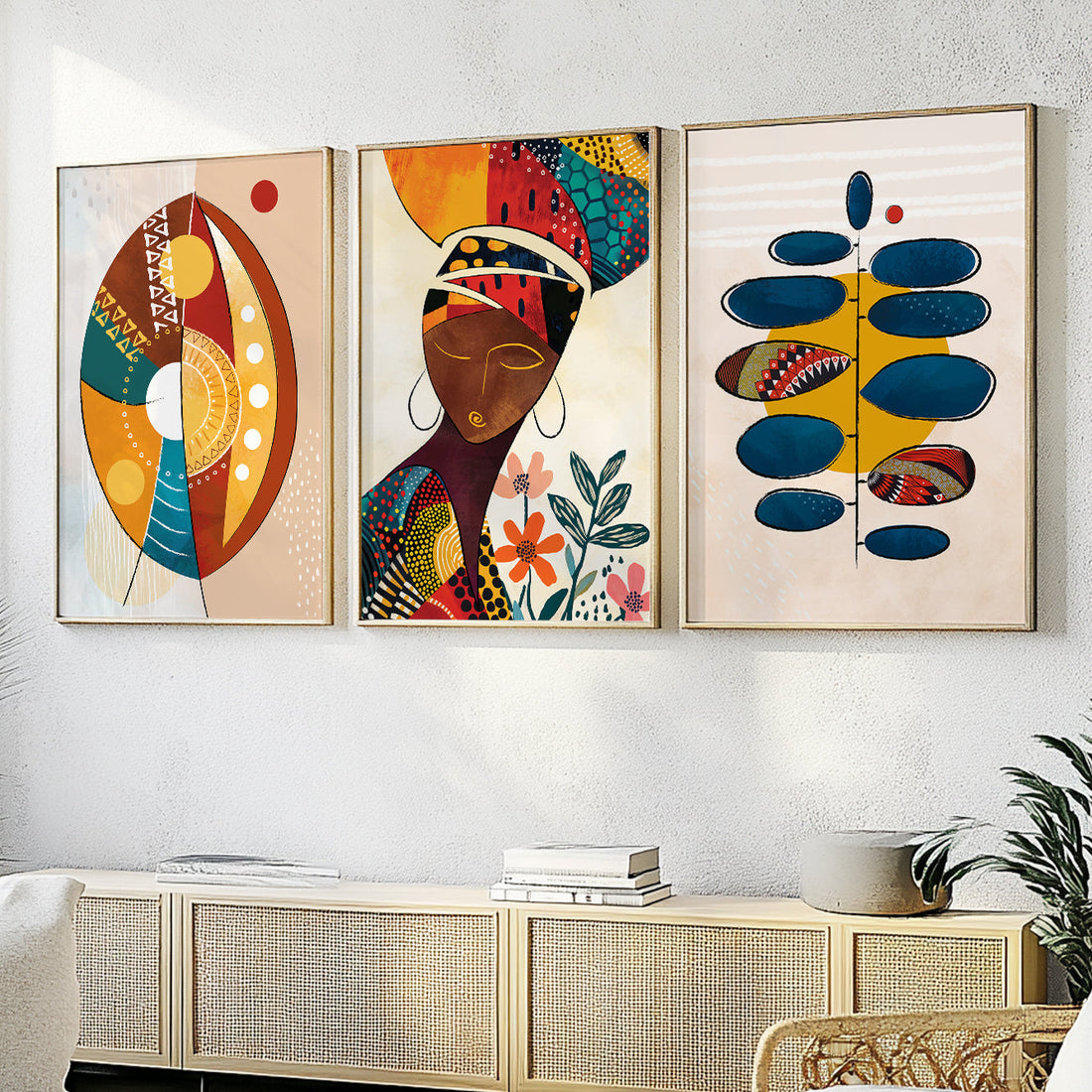
African Wall Art: A Timeless Expression of Culture and Beauty
African wall art is more than just decoration—it is a powerful representation of culture, history, and tradition. Rooted in centuries of artistic heritage, African wall art tells stories, conveys emotions, and brings a unique aesthetic to any space. Whether through intricate patterns, bold colors, or symbolic imagery, these artworks create a dynamic atmosphere that blends tradition with modern interior design.
1. The Rich History of African Wall Art
African art has been an integral part of the continent’s history for thousands of years. From ancient rock paintings in the Sahara Desert to elaborate textile designs in West Africa, wall art has always been a medium of storytelling and cultural expression. Many traditional African artworks are influenced by spiritual beliefs, tribal heritage, and the natural world.
2. Popular Styles and Techniques
African wall art comes in a variety of styles, each reflecting the diverse cultures across the continent. Some of the most popular styles include:
-
Tribal Art: Traditional masks, symbolic carvings, and geometric patterns inspired by indigenous tribes.
-
Mud Cloth (Bogolanfini): Handwoven and dyed textiles from Mali, featuring earthy tones and symbolic motifs.
-
Kente Patterns: Brightly colored, woven patterns from Ghana that symbolize history and identity.
-
Contemporary African Art: Modern interpretations of traditional themes, often using mixed media, vibrant colors, and bold compositions.
-
Rock and Cave Art: Ancient depictions of daily life, hunting scenes, and spiritual rituals, found in places like Namibia and South Africa.
3. How African Wall Art Enhances Interior Spaces
Incorporating African wall art into your home or office can instantly transform the atmosphere, adding depth, warmth, and character. Here are a few ways it can enhance your space:
-
Adds Cultural Depth: African artwork brings a rich heritage and meaningful storytelling to any room.
-
Creates a Statement Piece: Large, bold African art pieces serve as eye-catching focal points.
-
Enhances Color Harmony: Whether earthy neutrals or vibrant hues, African art complements a variety of interior styles.
-
Brings a Natural Feel: Many African artworks use organic materials like wood, clay, and fabric, adding texture and authenticity.
4. Choosing the Right African Wall Art for Your Space
When selecting African wall art, consider the following factors:
-
Size: Choose a piece that suits your space, whether a large canvas for a living room or a smaller framed artwork for a hallway.
-
Color Palette: Pick colors that match or contrast with your existing decor for a harmonious look.
-
Material and Texture: From handwoven tapestries to painted canvases, select a material that enhances your room’s aesthetic.
-
Symbolism: Many African artworks have deep cultural meanings—researching the history behind a piece can make it even more special.
5. Where to Find Authentic African Wall Art
Authentic African art can be found in:
-
Local and online art galleries specializing in African artwork.
-
Fair-trade markets and artisan shops that support African artists.
-
Directly from African artists and workshops to ensure authenticity and support local craftsmanship.
-
Home decor stores offering African-inspired designs for a modern twist.
Conclusion
African wall art is a beautiful way to celebrate heritage, embrace creativity, and elevate your interior design. Whether you are drawn to traditional tribal patterns, modern African-inspired prints, or handcrafted textiles, these artworks bring warmth, culture, and personality into any space. By carefully selecting meaningful pieces, you can create an environment that tells a story and reflects a deep appreciation for African artistry.
